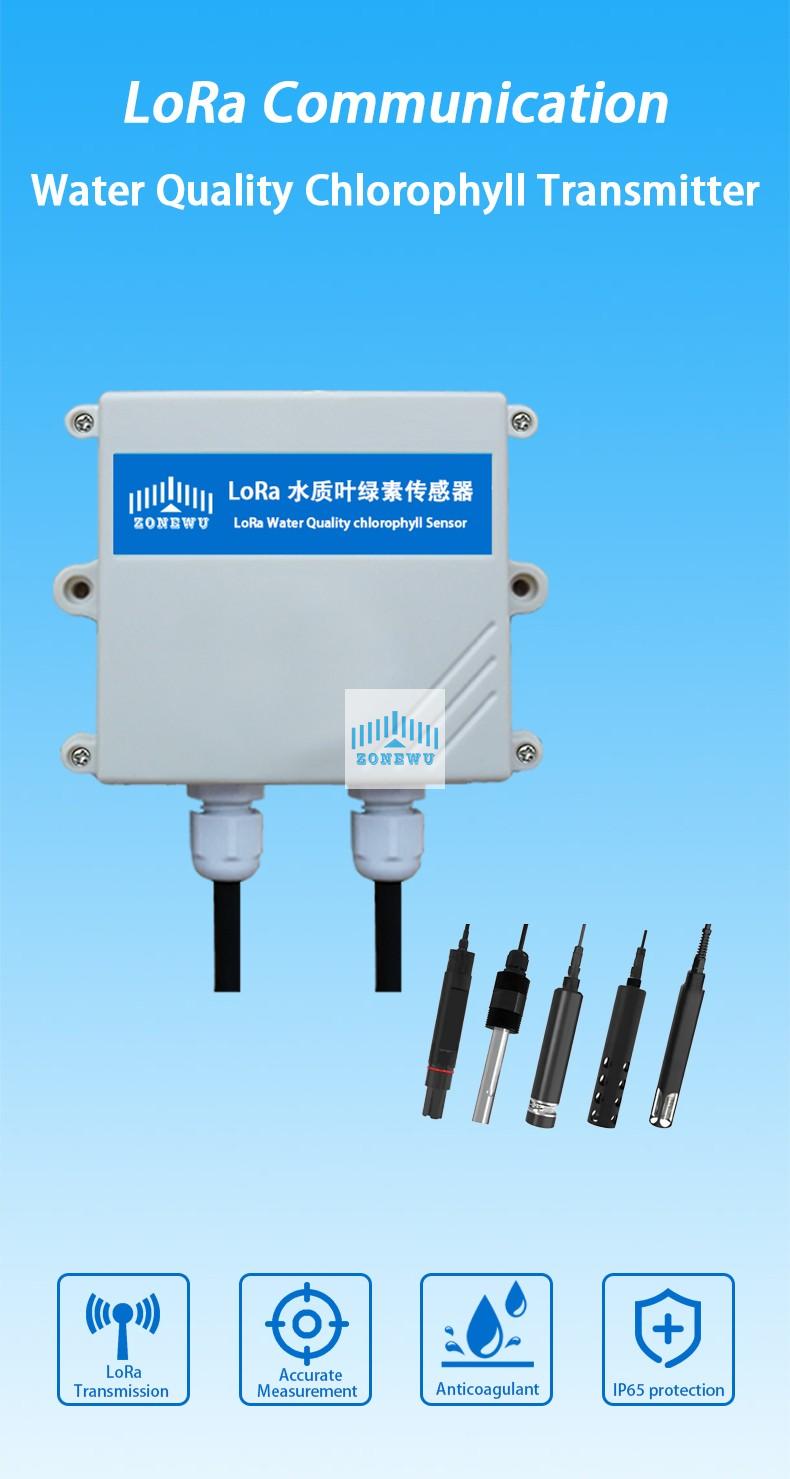The LoRa Water Quality chlorophyll sensor is a device that combines the LoRa wireless communication technology with the chlorophyll sensor for real-time monitoring and transmission of chlorophyll concentration data in water bodies. The following is a detailed introduction:
· Based on the principle of fluorescence method, when a specific wavelength of light hits chlorophyll in water, chlorophyll will absorb light energy and emit fluorescence, fluorescence in the intensity is proportional to the concentration of chlorophyll. The sensor calculates the amount of chlorophyll by detecting the intensity of the fluorescence signal.
· Built-in filter device, can filter out other wavelengths of light, enhance anti-interference ability, to ensure the accuracy of measurement.
· Equipped with temperature compensation function, it can automatically correct the impact of temperature change on the measurement results, to ensure the measurement accuracy under different water temperature conditions.
· Long-distance transmission: using LoRa wireless communication technology, with the ability to transmit data over a long distance, can send monitoring data to the receiving end of several kilometers or even longer, suitable for water quality monitoring in large area of water or dispersed monitoring points.
· Low power consumption: the sensor itself and the LoRa communication module have low power consumption, can run for a long time, can be used by battery power supply or solar power supply, easy to be used in remote areas or field environment without city power supply.
· High sensitivity and precision: can detect very low concentration of chlorophyll, high measurement accuracy, can provide accurate and reliable water quality monitoring data, help timely detection of small changes of algae and other plankton in water, is of great significance to early warning of water bloom and other water quality problems.
· Strong anti-interference ability: in addition to the optical filter design, LoRa communication technology itself also has a strong anti-interference ability, which can stably transmit data in a complex electromagnetic environment, to ensure the integrity and accuracy of the monitoring data.
· Easy to install and maintain: usually with a small and light design, simple installation mode, such as input, immersion, etc., can be easily deployed in a variety of water environment. At the same time, some sensors also have self-cleaning function, can automatically remove dirt and biological attachment on the probe surface, reducing maintenance workload, reduce maintenance costs.
· Measurement range: generally 0-400 μg/L, which can meet the monitoring needs of chlorophyll concentration in most natural water bodies and aquaculture water bodies.
· Resolution: Usually 0.01 μg/L or higher, which can accurately reflect small changes in chlorophyll concentration.
· Precision: High measurement accuracy, such as R2> 0.999, can ensure the reliability and accuracy of the measurement results.
· Power supply voltage: generally designed for wide voltage, such as DC 7-30V, to adapt to different power supply conditions.
· Protection grade: mostly IP68 level, with good waterproof and dustproof performance, can work steadily underwater for a long time.
· Operating temperature range: the common operating temperature range is 0℃ -50℃ or wider, which can adapt to the water temperature changes in different seasons and regions
· Water environment monitoring: it is widely used in natural water quality monitoring of rivers, lakes, oceans, reservoirs, to grasp the change of chlorophyll concentration in water bodies in real time, assess the degree of eutrophication of water bodies, and provide data support for environmental protection and water resources management.
· quaculture: In aquaculture farms, it is used to monitor the water quality of aquaculture water, timely understand the growth of algae in water, reasonably adjust aquaculture density and feed feeding, prevent the deterioration of water quality caused by algae excessive reproduction, and ensure the healthy development of aquaculture.
· Drinking water source protection: real-time monitoring of the water quality of drinking water sources to ensure the safety of water sources, prevent water pollution caused by algae outbreak and other reasons, and ensure the safety of drinking water for residents.
· Scientific research: to provide important data support for the research of oceanography, limnology, ecology and other related disciplines, to help researchers to deeply understand the structure and function of water ecosystem, and to study the relationship between algae and other plankton and environmental factors.

Contact: Qui
Phone: 18146178586
Tel: 18146178586
Email: qui@zonewu.com
Add: 1501-3, Building F03, Phase III, Software Park, Jimei District, Xiamen City, Fujian Province, China
